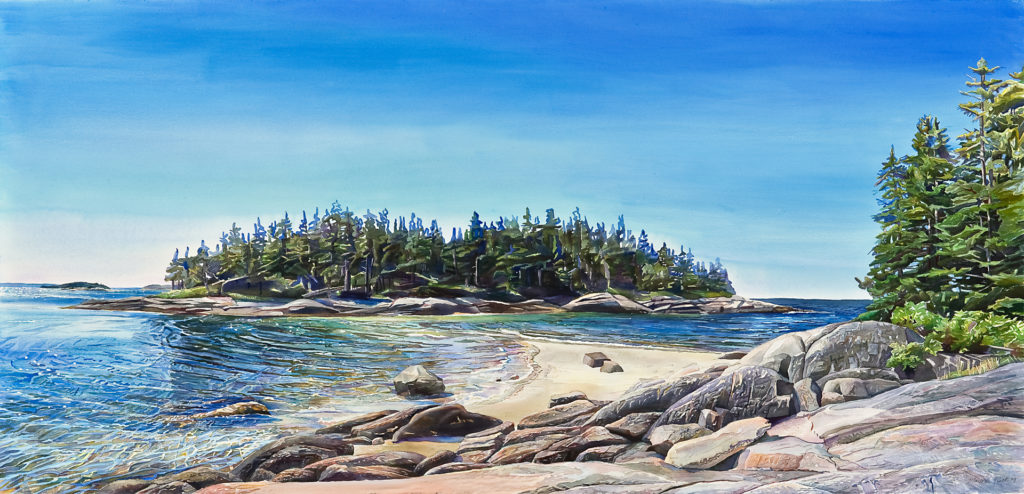
Sometimes one image can generate a world of compositions and a wealth of ideas for future paintings. “The island in this watercolor landscape is only accessible during low tide,” says Marjorie Glick. “Here, I’ve depicted the moment just before the tide comes in to return it to being an island. I visited the scene of Tidal Pathway three years in a row before I was able to get the light, time of day, and tide to all align.”
In the examples below, she demonstrates how she could have cropped the scene depicted in her large-scale watercolor Tidal Pathway differently to form many other compositions. Each cropping highlights a different aspect of the image. “If only there were enough hours in a day to paint them all,” she says. “To determine what you want your painting to be about, simple choices like where to place the horizon line; whether an image is rectangular, square ,or vertical; whether you zoom in or pan out, all determine the mood of an image.”
Watercolor Landscape | Choosing a Format
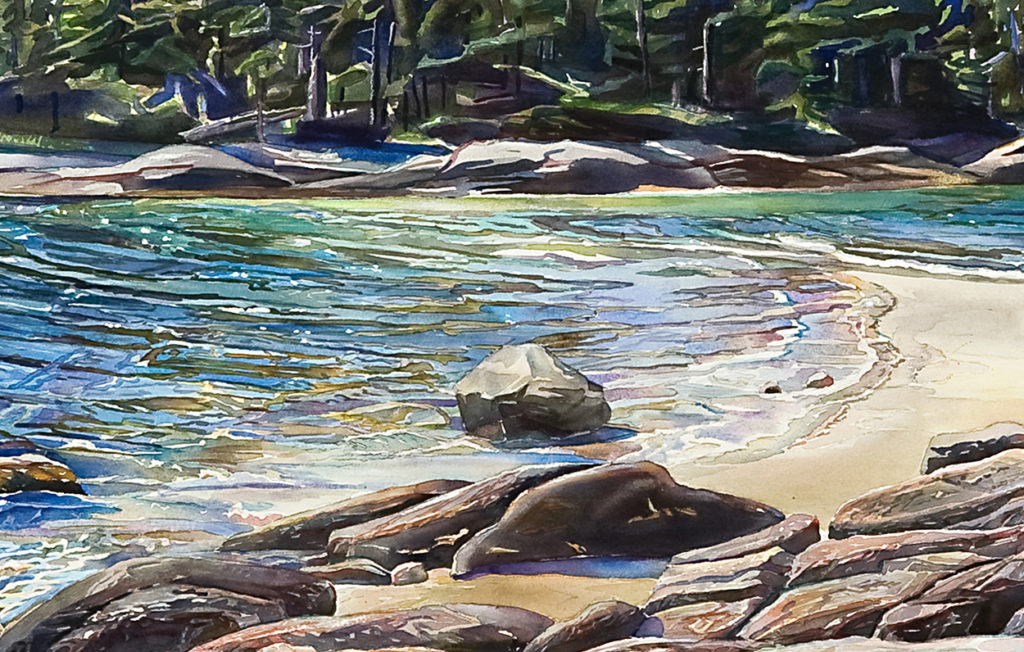
Close ups in a square or near square format direct the eye to the essence of your subject. Colors become more vivid and the water becomes crystal clear.
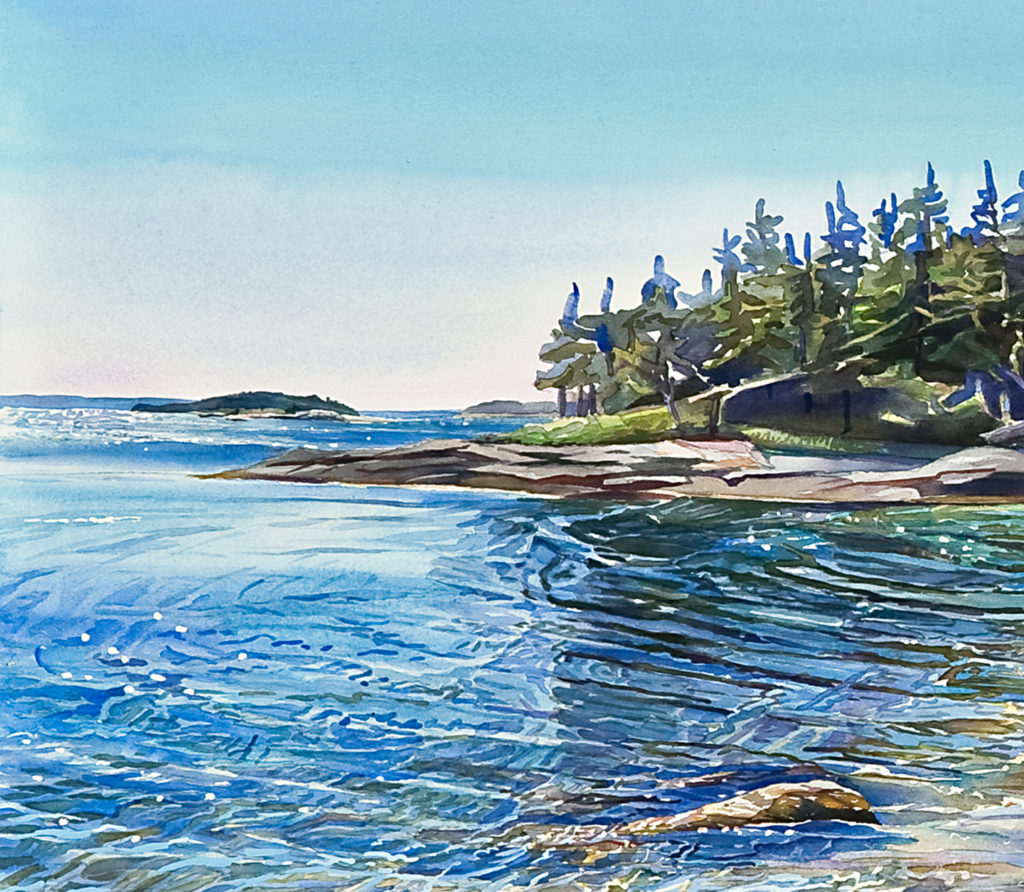
A square is also a great way to abstract an image or bring out its inherent geometry.
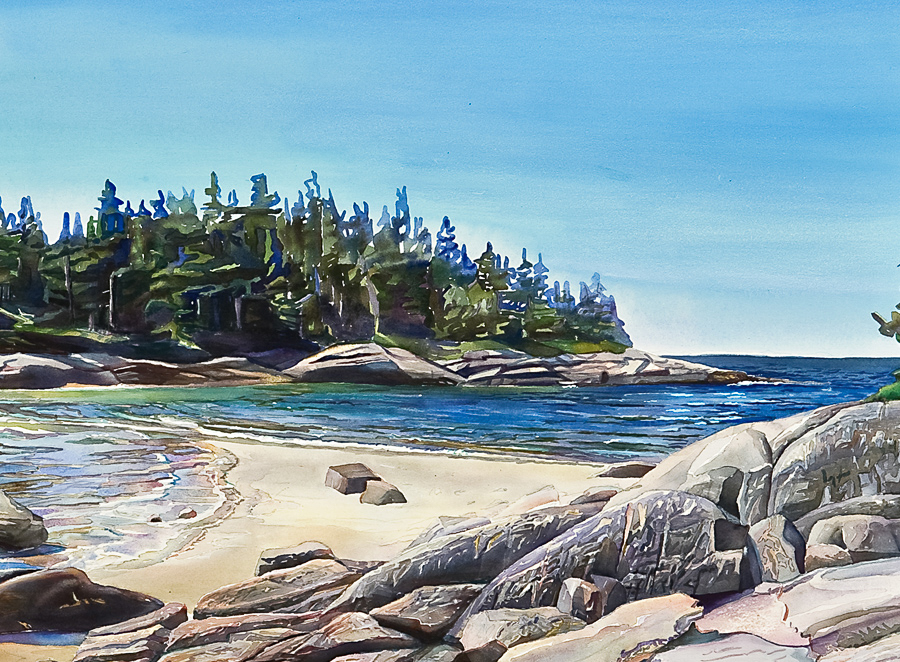
A square with close cropping also makes shapes and line more dominant. Its OK to only show part of an object to create some mystery.

Another way to create drama is to take a “slice” of the image.
Watercolor Landscape | Placing the Horizon Line
I consider the placement of the horizon line very important. This determines what you want the viewer to experience. Placing it really low will give emphasis to the sky and create a feeling of vastness, which is not really the best choice for this image.

A near middle placement of the horizon line in the finished work gives both sky and water equal importance and creates a feeling of light and air. It allows the viewer a greater sense of being there. It’s also a good format for reflections.

Placing the horizon high on the paper along with close cropping creates an intense focus on the island.
Watercolor Landscape | Placing Your Image on the Paper
Whether to center your image is also another consideration. In art school we were told never to center things but rules should sometimes be broken. The placement of the main motif: the island, creates a more iconic image and an experience of extreme focus.
Placing your image off center has a different effect. In these next two examples, the island is partially cropped, which gives more emphasis to the pathway.

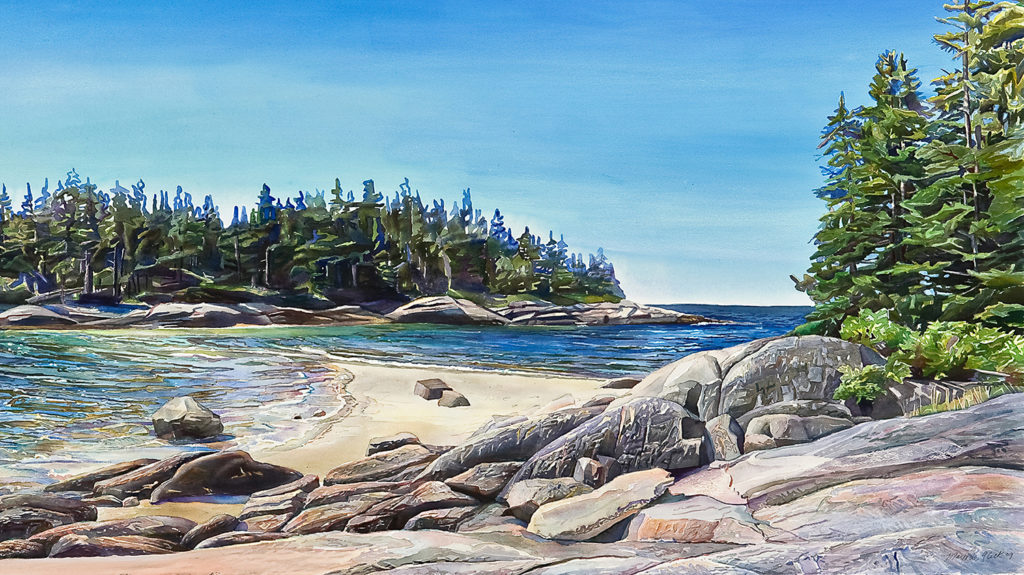
Watercolor Landscape | Vertical vs. Horizontal
Lastly, a vertical format gives an even greater sense of airiness and motion. In a vertical orientation, the pathway leads the eye up to the sky.
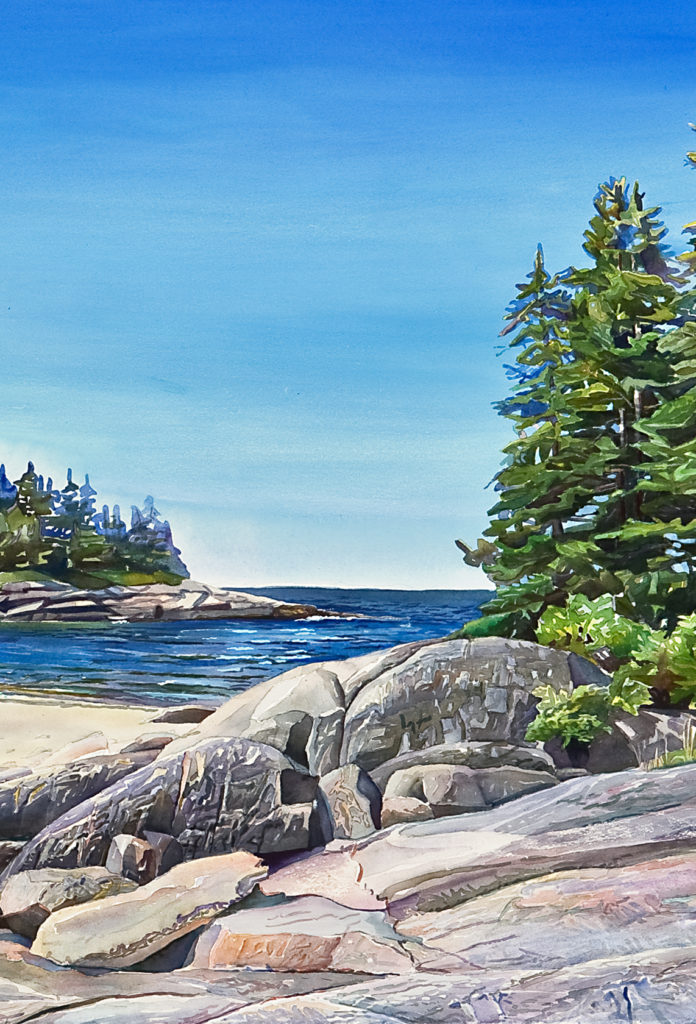

To me, it’s fascinating to consider all the opportunities available to me in any one scene.
Marjorie Glick is known for her large scale and vivid realism watercolors that are inspired by New England’s places of antiquity and by the beauty found in nature. She has been painting for 30 years and has exhibited at several regional museums and galleries, including the DeCordova Museum, Berkshire Art Museum, Brockton Art Museum, Beth Urdang Gallery, Boston, and the Forum Gallery in New York. She holds a BFA from Massachusetts College of Art and has studied independently with Wolf Kahn and George Nick.
For more inspiring stories like this one, sign up for our free weekly e-newsletter.



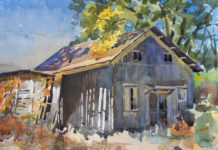




Thanks Kelly.
Makes an old retired spy Watercolorist think.
Thank you very much for a very well written and illustrated article! Picture perfect!